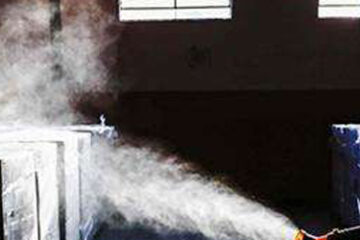What do you think of when it comes to winter? Coats, cotton jackets or hot pots that never end? A thousand people may have a thousand answers. However, if you are in the north and happen to print, then there is something that will probably appear in your answer — static.
In the winter in the north, the weather is cold and dry, and it is more likely to generate static electricity. When coils (especially membranes) are run in the press, the static electricity generated by friction can reach 15,000 values of 35,000 volts or higher, and if not handled properly, you will face countless troubles.
Q: Under what circumstances is it more likely to generate static electricity?
A: Static electricity is common in many industries. Take the printing industry as an example. With the increasing speed of machines and the increasing variety of synthetic materials, the negative effects of static electricity are becoming more and more obvious. There are many factors that can cause static electricity. It is generally believed that humidity and temperature changes are the main causes, and they are also highly dependent on the type of materials used. Membrane materials are more prone to static electricity than other materials.
Q: What harm does static electricity cause to printed products?
A: The accumulation of static electricity will have many effects on the printing process, mainly reflected in:
1. The printing speed is reduced. Due to the accumulation of static electricity, the running speed of the printing equipment may be affected, especially when film-based materials are used, which may be wound onto the machine (for example, a paper guide roller). In extreme cases, the device can’t even run at all.
2. The quality of printing is declining. When there is static electricity on the surface, the material easily adsorbs dust and impurities in the air, which is one of them. Second, the ink may be affected by the electrostatic field and a special distribution pattern may occur, which also affects the printing effect. Third, excessive static build-up may affect the ability of the ink to adhere to the material.
3. Personnel safety. When static electricity accumulates to a certain extent, it may cause bodily harm to the operator.
4. Equipment safety. As with personnel safety, when the static electricity reaches a certain level, it may cause damage to the equipment itself.
Q: What new developments have been made in static control equipment?
A: From the relevant foreign information, the main new developments are:
1. Responsive control. That is, the static control device can detect the amount of static electricity on the surface of the material to automatically adjust the amount of neutralized ions.
2. Cleaning tips. The control device can self-test whether the antistatic bar needs cleaning and give a hint.
3. The output power is adjustable. The control unit can be used in some sensitive material applications, such as RFID. 4. Higher protection level. This allows the control unit to be used in relatively harsh environments.
With the gradual improvement of people’s requirements for personnel, equipment safety and print quality, the performance requirements of various workstations on printing equipment are also correspondingly improved. This puts higher requirements on the R&D and production capacity of equipment manufacturers. Customer demand for customized devices is becoming more and more popular.


